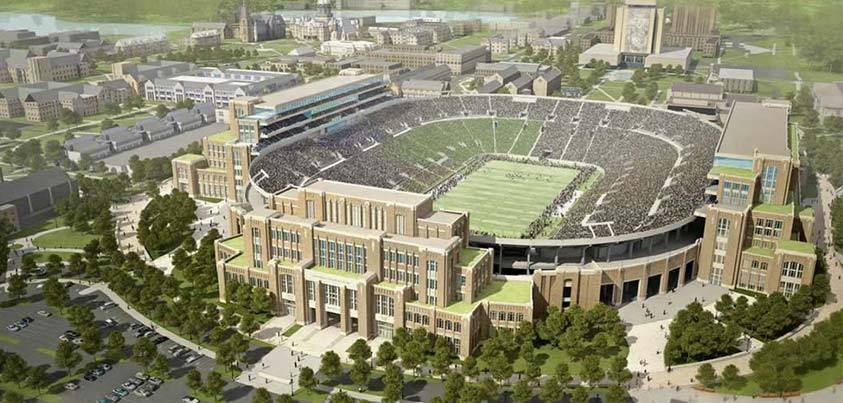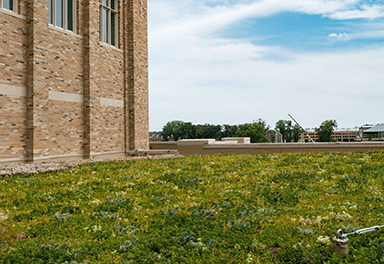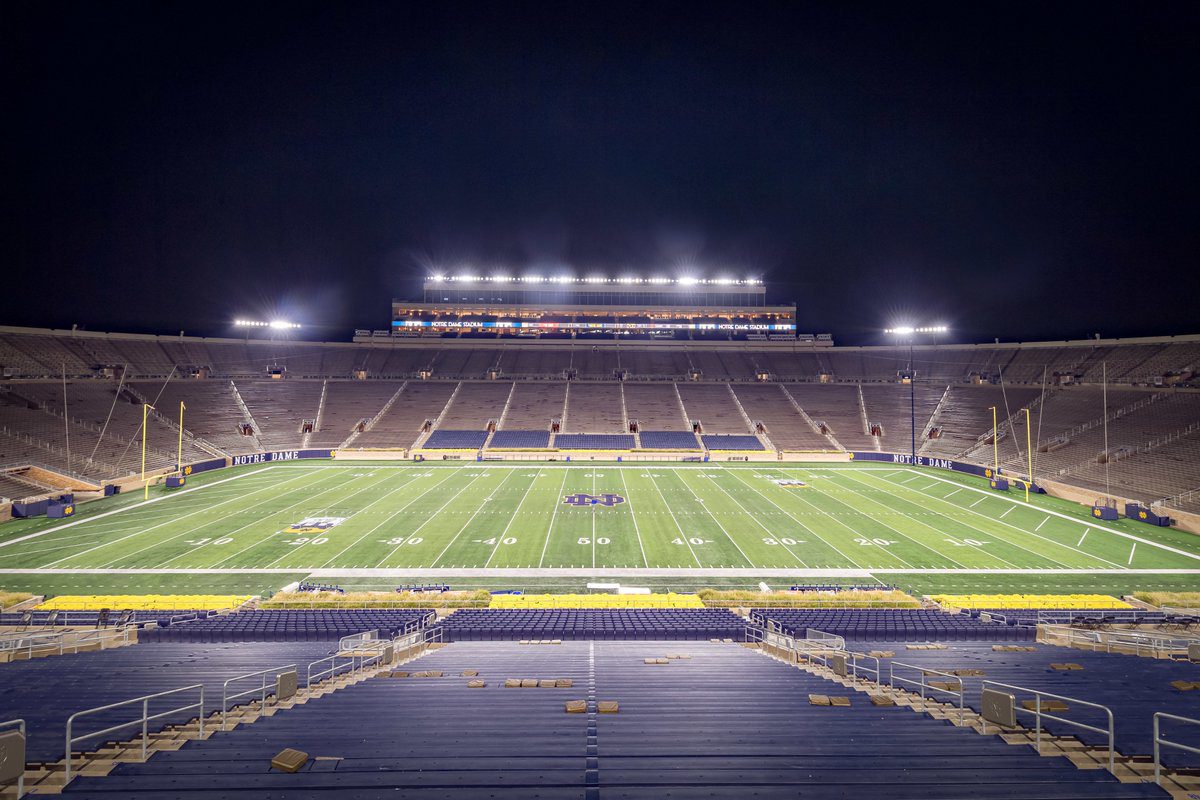Notre Dame’s Athletic Department’s interest in being “green” runs deeper than the color’s association with the Fighting Irish’s sports teams — although green is Notre Dame’s primary “spirit color.” It also coincides with this Catholic university’s belief that “sustainability has its own inherent value: it equates a respectful stewardship of the environment with the faithful care of God’s creation.”
Recycling, for example, began on the Notre Dame campus in 1990 with Recycling Irish, a campus-wide initiative that collected 133,000 pounds of recyclables in its first year. By 2006, that number increased to 13.7 million pounds.
The following year, a pilot program, Game Day Recycling, kicked off at the historic Notre Dame Stadium to get football fans to recycle. Students handed out recycling bags to tailgaters, and recycling bins were situated around campus and in the stadium. The results were so promising that the program was launched officially for the 2008 football season.
“This is just a huge opportunity here to reclaim material that we previously have thrown out,” stated Dan Skendzel, Notre Dame’s director of Administrative Services.

Notre Dame Stadium’s 2008 recycling campaign got off to a tremendous start. The opening game collected 24,000 pounds of recyclables — several times more than 2007’s total of 6,200 pounds. In 2008’s six home games, the total reached 146,000 pounds.
Recycling efforts continued so successfully that SaveOnEnergy.com placed the university at 11th (tied with the University of Oregon) in its 2014 sustainability ranking of the top 25 football schools. Besides spotlighting the recycling program, the website noted Notre Dame’s participation in the nationwide RecycleMania competition, its waste diversion rate, the emphasis on using locally-grown or organic food, and the university’s pledge to adhere to Leadership in Energy and Environmental Design (LEED) standards for all new buildings.
This LEED commitment was epitomized in the three buildings — Duncan Student Center, Corbett Family Hall, and O’Neill Hall — constructed around Notre Dame Stadium in 2017.
A particularly remarkable aspect was these buildings’ green roofs. Collectively covering approximately 43,000 square feet, this vegetative “living” roof system is the largest in Indiana.
Environmentally, this expanse of sustainable roofing acts as insulation to improve energy efficiency and saves water by decreasing stormwater run-off. These qualities, coupled with other eco-minded factors like using recycled building materials, diverting construction waste, and green design innovations, led the U.S. Green Building Council to award Notre Dame a Gold LEED in 2020.

The year 2017 was also a big year for Notre Dame Stadium. Its athletic department and stadium food service provider, Levy, partnered with the local nonprofit Cultivate Culinary School & Catering in a program to reduce food waste and food insecurity, along with supporting job training.
“Food rescue is paramount,” stated John Heisler, senior associate athletics director. “And Notre Dame athletics is thrilled to have Cultivate and Levy join in this exciting initiative.”
This operation involves gathering the prepared but not served food on game day, and then Cultivate picks up the items and sorts them by type (protein, starch, or vegetable). Once done, the organization processes the food into low-cost meals and delivers them to pantries in northern Indiana.
“From a sustainability standpoint, we’re always looking for opportunities to enhance what we’re already doing on campus, and we see this as a good place to start,” explained Elizabeth Westfall, senior program manager in the Office of Sustainability.

In this project’s first three years, Cultivate Culinary distributed more than 35,000 pounds of food from Notre Dame Stadium, and the food collection expanded to include basketball and hockey games and other athletic events.
Overall, Notre Dame Athletics rescued more than 70,000 pounds of food between 2017–2019.
However, food rescue wasn’t a new concept for Notre Dame students. Campus dining halls already had food donation programs in operation. The campus-wide Fighting Irish Fighting Hunger program has been held since 2013 to benefit needy families in the Michiana region —
southern Michigan and northern Indiana. Over $23,000 was raised in the 2022 campaign, along with 140 pounds of food, which equals about 200,000 meals.
The athletic department and the sustainability office also have collaborated to find ways to promote eco-friendly practices. One avenue has been recycling-themed videos featuring nuclear science professor Dr. Ed Stech, and another is a Green Ambassador program. The collaboration reflects the message behind Pope Francis’ encyclical letter, “Laudato Si’,” which urges everybody to take care of our natural environment and all people.





